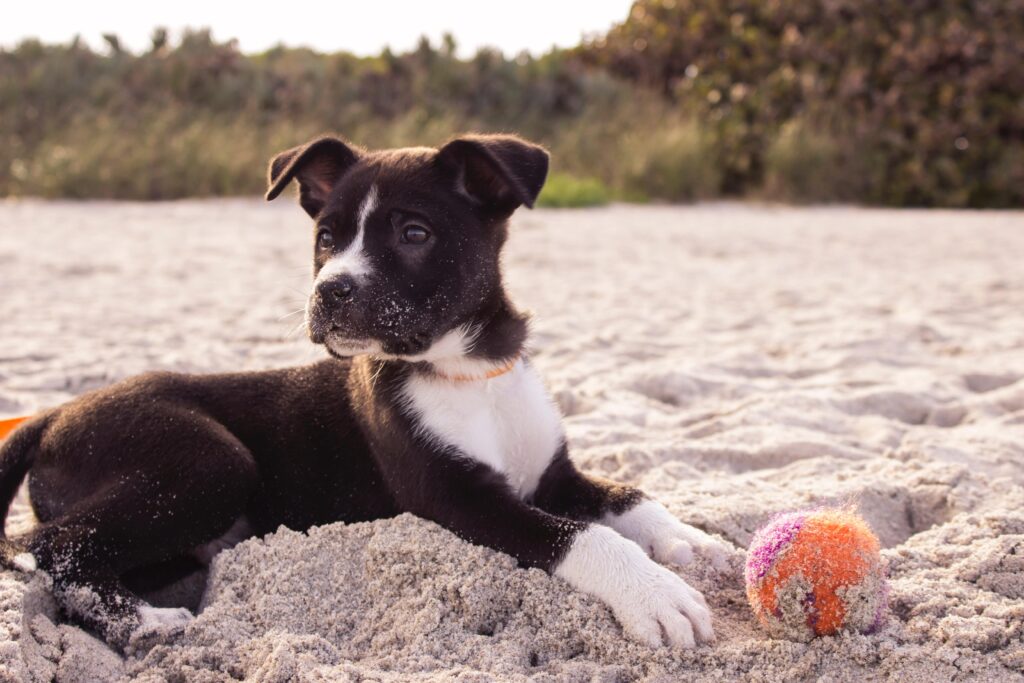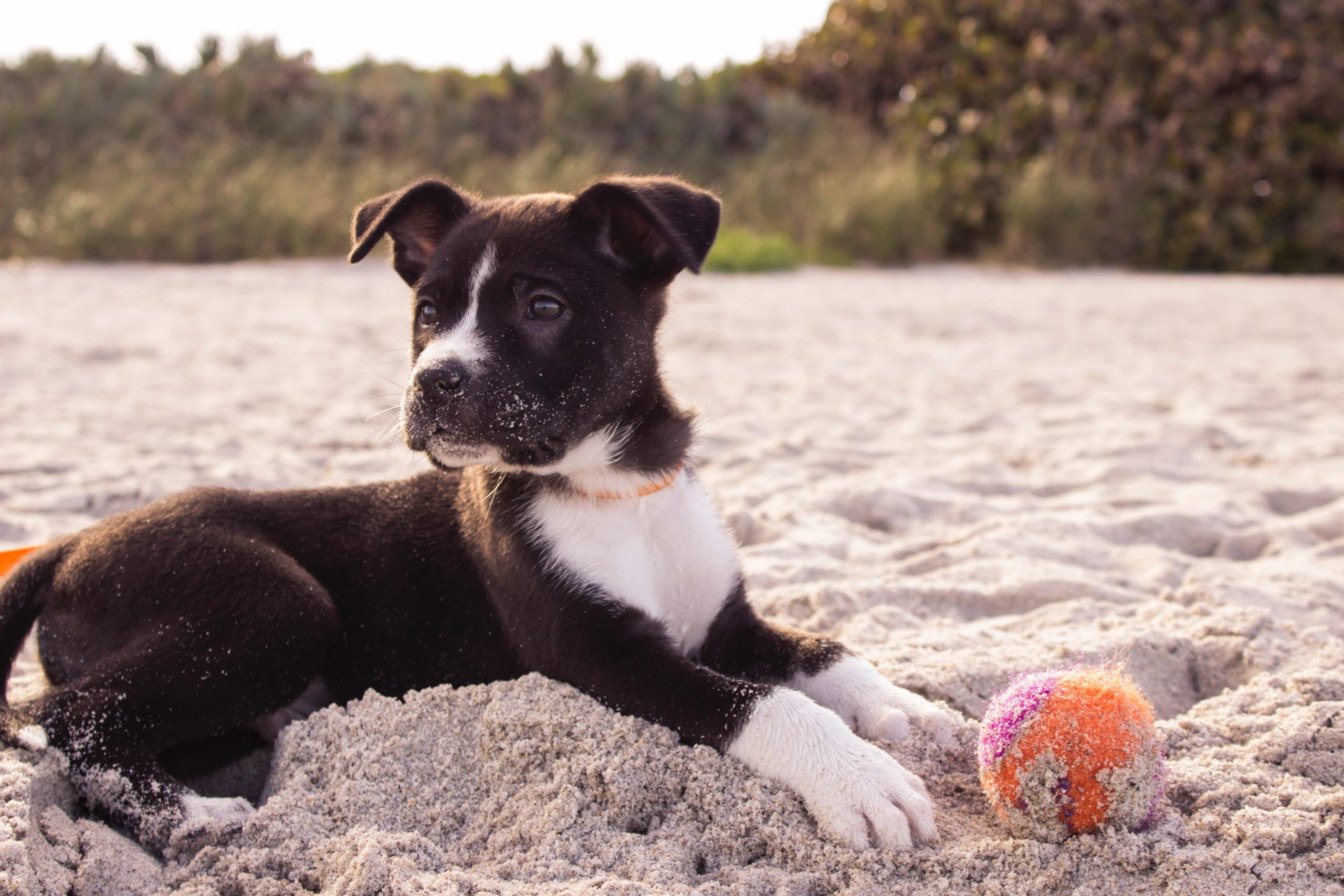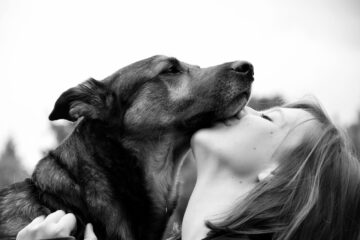Enjoying outdoor adventures with your dog can be immensely rewarding, but the challenge of getting them to focus on you outside is a common hurdle for pet owners.
If you find yourself wondering, How to Get Your Dog to Focus on You Outside, you’re in the right place.
In this guide, we’ll explore 15 tips to capture and hold your dog’s attention, creating enjoyable and focused experiences in the open air.
Whether you’re working on obedience, practicing commands, or simply seeking a deeper connection, these tips will pave the way for a more engaged and focused canine companion during your outdoor escapades.
Embark on this journey with confidence, knowing that by implementing these tried-and-true techniques, you’ll strengthen the bond with your dog and enhance their responsiveness to your cues in any outdoor setting.
Table of Contents
Unleashing Focus: 15 Tips on How to Get Your Dog to Focus on You Outside

1] Establish a Connection
Building a strong connection with your dog is the foundation of successful outdoor training.
Spend quality time engaging in interactive play, sharing treats, and creating positive associations.
Incorporate activities that your dog enjoys to make the bonding experience enjoyable.
The stronger the bond, the more likely your dog will be inclined to focus on you during outdoor training sessions.
2] Use High-Value Treats
Outdoor distractions demand enticing incentives.
High-value treats, such as small pieces of cooked chicken or cheese, can be irresistible for your dog.
Reserve these special treats exclusively for outdoor training sessions, creating a powerful link between focused behavior and delectable rewards.
Tip: “Reserve special treats for outdoor sessions to create a strong association between focus and delicious rewards.”
Experiment with different treats to identify the ones that truly captivate your dog’s attention.
3] Master Basic Commands
Ensure your dog responds reliably to basic commands like “sit,” “stay,” and “come.”
Mastering these fundamental commands in controlled environments lays the groundwork for successful outdoor training.
Regular practice instills confidence in your dog and establishes a strong foundation for more advanced training activities.
• Teach basic commands: sit, stay, and come reliably • Master in controlled settings for successful outdoor training • Regular practice builds confidence and establishes a strong foundation.
4] Gradual Exposure to Distractions
Gradually expose your dog to outdoor distractions in a controlled manner.
Begin in a low-distraction environment and incrementally introduce more stimulating elements.
This controlled desensitization helps build resilience, allowing your dog to focus despite enticing outdoor stimuli.
Gradual exposure minimizes the risk of overwhelming your dog and ensures a positive learning experience.
5] Engage in Interactive Play
Incorporate play into your outdoor training sessions to make focus enjoyable for your dog.
Interactive games not only serve as a training tool but also strengthen the bond between you and your furry companion.
Use toys to create engaging activities that capture your dog’s attention and reinforce positive behavior.
The element of play adds a dynamic and enjoyable aspect to the training process.
6] Varied Training Environments
Practice commands in diverse outdoor settings to generalize your dog’s training.
Moving from your backyard to parks or quiet streets exposes your dog to different stimuli.
Generalizing commands enhances adaptability and focus, ensuring your dog can respond reliably in various outdoor scenarios.
Gradual exposure to different environments contributes to a well-rounded training experience.
Tip: “Move from your backyard to parks or quiet streets, gradually exposing your dog to varied scenarios.”
7] Positive Reinforcement
Celebrate each moment your dog chooses to focus on you outdoors.
Positive reinforcement, including verbal praise, treats, and affection, reinforces the desired behavior.
Consistent acknowledgment encourages your dog to repeat the focused actions, creating a positive association with paying attention during outdoor activities.
8] Use Clicker Training
Incorporate clicker training for precise positive reinforcement.
The distinct sound of a clicker provides instant feedback, helping your dog associate the exact moment of focus with a positive outcome.
Clicker training enhances communication and enables you to mark desired behaviors with precision, reinforcing your dog’s focus during outdoor training.
9] Understand Your Dog’s Body Language
Become attuned to your dog’s body language to anticipate potential distractions.
Understanding signs of restlessness, excitement, or stress allows you to redirect their focus before they become overwhelmed.
Tailor your training approach based on your dog’s reactions, ensuring a proactive response to environmental stimuli.
Tip: “Tailor your training approach based on your dog’s reactions to outdoor stimuli.”
10] Establish a Routine
Dogs thrive on routine, and establishing a consistent schedule for outdoor activities and training sessions enhances focus.
Predictability creates a familiar environment that minimizes surprises and distractions, making it easier for your dog to concentrate on you.
A structured routine contributes to a sense of security, promoting focused behavior during outdoor training.
11] Be Patient and Calm
Maintaining a patient and calm demeanor during outdoor training is crucial. Your energy directly influences your dog’s focus.
A tranquil training atmosphere fosters a sense of security, encouraging your dog to concentrate on you amidst external stimuli.
Patience is key as you work through distractions, and a calm approach sets the tone for a positive training experience.
12] Explore Canine Sports
Engaging in canine sports, such as agility or obedience trials, adds a fun and challenging dimension to outdoor training.
These activities provide both mental stimulation and physical exercise, reinforcing your dog’s ability to concentrate in dynamic outdoor environments.
Tip: “These activities provide mental stimulation, reinforcing the ability to concentrate in dynamic outdoor environments.”
Participating in sports contributes to a well-rounded training regimen and strengthens focus through enjoyable challenges.
13] Create a Distraction-Focused Game
Introduce controlled distraction-focused games to challenge and strengthen your dog’s focus.
Incorporate elements like toys or the presence of other dogs to test their attention.
Gradually increase the complexity of these games as your dog becomes more adept at maintaining focus.
Controlled challenges enhance your dog’s ability to concentrate amidst varying outdoor stimuli.
14] Seek Professional Guidance
If focus challenges persist, seeking professional guidance from a certified dog trainer is a wise step.
A professional can assess your dog’s specific needs, identify potential hurdles, and provide tailored strategies to enhance focus in outdoor settings.
Professional trainers bring expertise and experience to address unique challenges, ensuring a more effective training approach.
15] Consistent Practice
Consistency is the cornerstone of successful outdoor training. Regular and dedicated practice reinforces focus as a habitual behavior.
Dedicate time to outdoor training sessions, gradually increasing complexity as your dog progresses.
With consistent practice, you’ll witness your dog’s ability to concentrate on you flourishing over time, creating a strong foundation for a well-behaved and focused companion.
Tip: “Dedicate regular time to outdoor training, watching your dog’s ability to concentrate flourish over time.”
How to Get Your Dog to Focus on You Outside: FAQs
Can any dog learn to focus outdoors?
Yes, with consistent training, virtually any dog can learn to focus outdoors. The key lies in understanding your dog’s individual needs and tailoring the training approach accordingly.
How often should outdoor training sessions occur?
The frequency of outdoor training sessions depends on your dog’s age, breed, and individual temperament. Aim for regular, short sessions to maintain engagement and prevent boredom.
Are certain breeds more challenging to train for focus outdoors?
While individual temperament varies, certain high-energy or easily distracted breeds may require additional patience and consistent training. Tailor your approach to your dog’s unique characteristics.
What if my dog is fearful of outdoor stimuli?
If your dog displays fear or anxiety outdoors, consult with a professional trainer to address underlying issues. Gradual desensitization and positive reinforcement can help build confidence and focus.

Conclusion:
As you venture into the realm of outdoor activities with your canine companion, mastering the art of getting your dog to focus on you is a game-changer.
By implementing these 15 tips on “How to Get Your Dog to Focus on You Outside,” you’ll create a positive and focused experience for both you and your furry companion in the great outdoors.
Embrace these strategies with patience and consistency, and watch as your dog becomes more attuned to your presence, creating enjoyable and harmonious outdoor experiences for both of you.
With dedication and the right approach, you’ll find that getting your dog to focus on you outside is not just a training goal but a pathway to a deeper, more rewarding bond.





